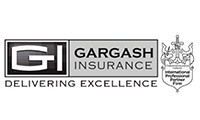Partner Content By KT Engage

Consolidation is what the UAE insurance needs

Regulatory changes and a robust economy are driving mergers and acquisitions, fostering consolidation in the insurance industry.
The insurance sector in the Gulf, particularly in the UAE and KSA, the primary insurance markets in the GCC, is undergoing rapid evolution. The continued increase in insurance premium volume points to the market moving towards steadily towards maturity in terms of growth as well as regulations, noted Suresh Nair, Executive Director at Gargash Insurance.
In 2022, the Middle East and Africa insurance market witnessed 24 M&A transactions. Notable mergers included Watania international Holding with Dar Al Takaful and the acquisition of Aman's non-life portfolios by Salama in the UAE. The recent approval for Sukoon Insurance (previously Oman Insurance) to acquire ASCANA (Arabian Scandinavian Insurance) also exemplifies the strategic nature of such mergers, enhancing product offerings and market presence. Sukoon, which is among the top three insurers in the UAE, has emerged stronger following its consolidation drive. Sukoon had earlier also acquired the life insurance portfolio held by Assicurazioni Generali in the UAE, as well as that of Chubb Tempest Life Reinsurance.
"Sukoon, formerly Oman Insurance, lacked Sharia-compliant insurance products. By acquiring Arabian Scandinavian insurance, Sukoon now has a Takaful arm, enabling a comprehensive product range for its consumers," pointed out Nair.
Another significant deal with regional impact was the integration of National Life & General Insurance Company (NLGIC) and RSA Middle East, forming a new regional brand, Liva. Motivated by the ambition to build a multi-line insurer, this move reflects the transformative nature of strategic alliances.
Emphasising the natural progression of consolidation, mergers, and acquisitions in a maturing industry, Nair cited competition, rising costs, and increased regulatory standards in the UAE. "As markets mature, there is a relative increase in costs, and revenues come under pressure. Regulatory authorities are guiding the UAE market towards global financial stability, world class standards and enhanced customer protection, prompting insurance companies to elevate reporting standards and transparency. The implementation of IFRS17, effective from January 1, 2023, stipulates, among other things, more detailed reporting of revenue and cash flow positions, with an increased requirement for maintaining capital solvency. These factors can contribute to an uptick in the overall cost for some companies. As the thresholds for economic operation rise along with competition in the market, it is natural to expect a surge in M&A and consolidation activity."
The GCC has comparatively low insurance penetration rates, ranging from 0.9% in Qatar to 2.9% in the UAE, compared to an average of 7% in some older and more matured markets. Recent regulatory moves, such as mandatory health insurance for residents and unemployment insurance, have contributed to increased insurance penetration in the UAE. However, significant growth potential remains untapped in the GCC market.
Discussing the impact of M&A and consolidation on insurance brokers and consumers, Nair asserts it is a win-win situation. Consolidation would assist in the merged/ acquired entities being financially stronger which will, in turn, translate to stronger balance sheet, ability to invest in advanced technologies & product development. This raises levels of customer offerings and service standards, benefiting both the industry and consumers alike.
As of 2021, the UAE has one of the most robust insurance markets in the Gulf region. Over 60 insurance companies, including 12 Takaful insurance firms, operate in the UAE. Both life and non-life insurance segments significantly contribute to the sector's growth. Despite global economic challenges, the UAE insurance market has shown resilience and continues to experience steady growth. In the first half of 2023, the overall revenue for the industry increased by 15% to Dh14 billion, registering a profit before tax growth of about six per cent. The GCC insurance CAGR stands at around 4.3% during the 2019-2024 period as per an Alpen Capital industry report. Compared to mature markets where a growth rate of 1% is considered the norm, "the GCC market growth presents a good opportunity for international players to consider entering the GCC market through mergers and acquisitions" noted Nair.



